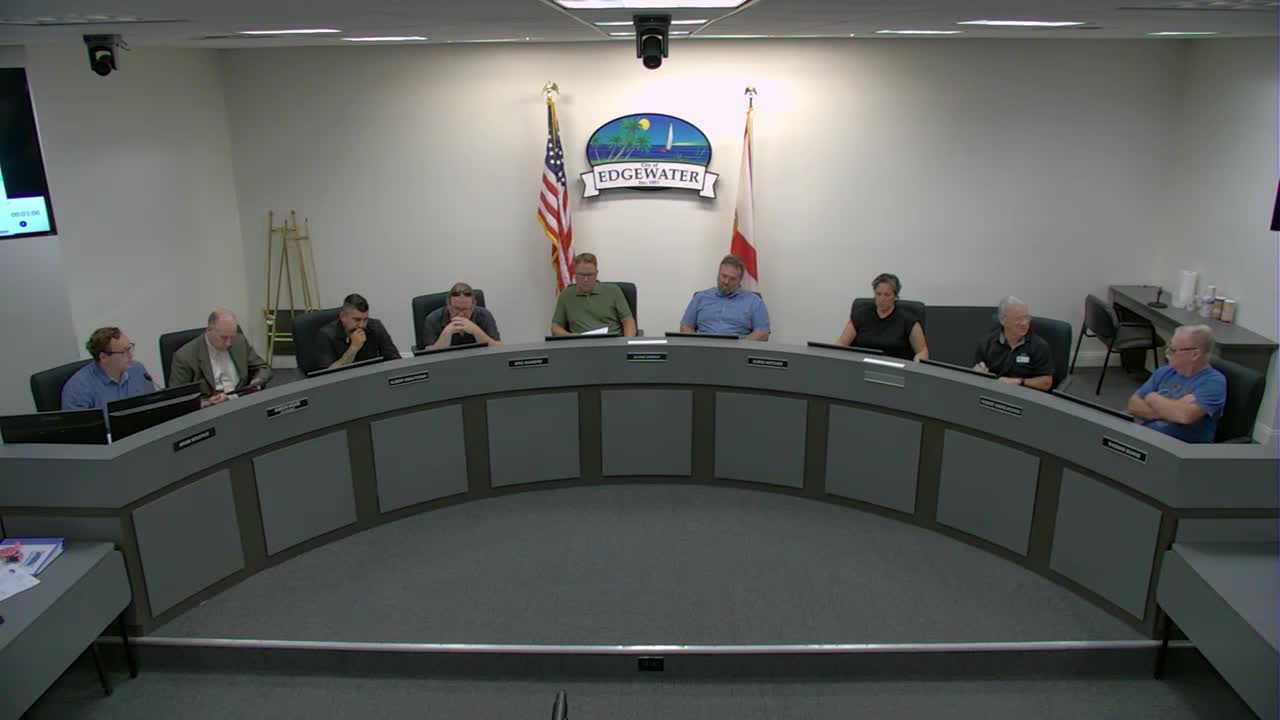Residents rally against commercial zoning of wetland area
June 12, 2024 | City of Edgewater, Volusia County, Florida

This article was created by AI summarizing key points discussed. AI makes mistakes, so for full details and context, please refer to the video of the full meeting. Please report any errors so we can fix them. Report an error »

In a recent government meeting, discussions centered around a proposed zoning change for a property along the growing corridor of Highway 442, which is adjacent to Deering Park. The applicant seeks to amend the land designation from conservation to commercial, while maintaining a conservation overlay. This proposal has sparked significant concern among local residents, particularly regarding the environmental implications and existing flooding issues in the area.
Gina Holt, a resident of Hideaway Lane, presented compelling evidence of chronic flooding in the vicinity, citing her experiences over the past two decades. She emphasized that the property in question is nearly 100% wetlands, as confirmed by environmental assessments, and argued that converting it to commercial use would exacerbate existing water management problems. Holt highlighted that the area lacks adequate stormwater infrastructure, which has led to severe flooding during heavy rainfall events, including the recent impacts of Hurricane Ian.
Holt's testimony was supported by photographic documentation showing standing water in the area, which she claimed has made access to homes difficult during significant rainfalls. She urged the board to reconsider the zoning change, suggesting that the potential displacement of water from the property could negatively affect neighboring homes.
In response to community concerns, board members clarified that any development would be subject to strict stormwater management regulations, ensuring that water displacement would be managed appropriately. They noted that the applicant would likely face substantial costs for wetland mitigation if the project were to proceed.
The meeting concluded with a call for further consideration of the proposal, as residents expressed a desire for more comprehensive discussions regarding the environmental impact and infrastructure needs before any zoning changes are approved. The board is expected to revisit the issue in the coming month, allowing for additional input from the community and further evaluation of the proposed development's implications.
Gina Holt, a resident of Hideaway Lane, presented compelling evidence of chronic flooding in the vicinity, citing her experiences over the past two decades. She emphasized that the property in question is nearly 100% wetlands, as confirmed by environmental assessments, and argued that converting it to commercial use would exacerbate existing water management problems. Holt highlighted that the area lacks adequate stormwater infrastructure, which has led to severe flooding during heavy rainfall events, including the recent impacts of Hurricane Ian.
Holt's testimony was supported by photographic documentation showing standing water in the area, which she claimed has made access to homes difficult during significant rainfalls. She urged the board to reconsider the zoning change, suggesting that the potential displacement of water from the property could negatively affect neighboring homes.
In response to community concerns, board members clarified that any development would be subject to strict stormwater management regulations, ensuring that water displacement would be managed appropriately. They noted that the applicant would likely face substantial costs for wetland mitigation if the project were to proceed.
The meeting concluded with a call for further consideration of the proposal, as residents expressed a desire for more comprehensive discussions regarding the environmental impact and infrastructure needs before any zoning changes are approved. The board is expected to revisit the issue in the coming month, allowing for additional input from the community and further evaluation of the proposed development's implications.
View full meeting
This article is based on a recent meeting—watch the full video and explore the complete transcript for deeper insights into the discussion.
View full meeting